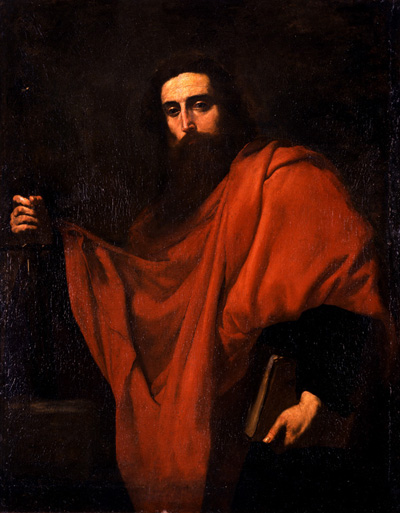Saint Paul
1632
Jusepe de Ribera (1591-1652)
Oil on canvas
125 x 99 cm
Jusepe de Ribera was barn in Játiva, near Valencia in 1591, where he received his first instruction as an artist. By 1611, however, he was in Italy, the country that set its stamp upon his style. Within two years, he had arrived in Rome, where he immersed himself in the international group of Caravaggisti, from whom he learned the naturalism and chiaroscuro that had made Caravaggio a sensation. Three years later he moved to Naples, at that time under Spanish rule. Ribera exploited his national heritage, as well as his dramatic style, to dominate the local market for painting, beginning with the Spanish viceroys. Playing both sides, he painted like an Italian, but signed his works, "Jusepe de Ribera / español."
The Hispanic Society canvas offers a typical example of Ribera's naturalism. St. Paul seems to emerge from the enveloping darkness only where stray shafts of light fall upon him, his intelligent expression looking directly out at the viewer. His strong hands grasp the book of his Epistles and the sword with which he was martyred, the two attributes which identify him as a saint. This picture was probably painted as part of a now dispersed series of saints of nearly identical dimensions in similarly flowing robes, including the St. Peter (Museo del Prado, Madrid) and the St. Matthew (Kimbell Art Museum, Fort Worth).
Text and images © Hispanic Society of America.
